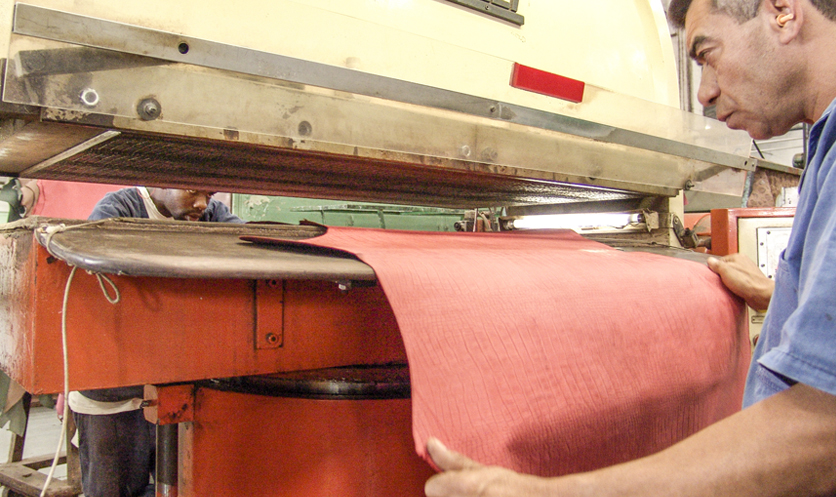
FACTS YOU SHOULD KNOW ABOUT DYEING NATURAL LEATHER
In the present scenario, most tanners want complete penetration into the leather. Consequently, it is also desirable to have a full penetration and a surface colour. For this reason, we at Aaron Leathers often make two blends to meet the goal. One blend of the surface dyeing types, and another of only penetrating types. Then, combine them for application. When working with blends like this, it usually will involve four or more separate dyes.
It’s obvious one of the most important selection factors is the visible, true hue of a color. Selecting an orange when orange is the desired result on leather will always be the best starting place. Having a library or a reference of visual color standards is a great aid to a colorist. This method will tend to save hours of experimentation, and leave leathers with quality dyeing.
Leather furniture and bags are more than just a piece in your home or a staple in your wardrobe — they are investments. Quality leather goods can stand the test of time and be handed down to future generations, but their longevity often exceeds the stability of their color.
Fading or color loss is inevitable. It happens after frequent use, exposure to the sun, and even from the oils that rub off to people. Fact is, leather goods are prone to showing their age. At some point, they will need a new coat of dye.

Dyeing Leather: An Art
Dyeing leather is a form of art, not science. Variations in conditions, materials, and an artist’s touch will have a direct effect on the outcome. Whether you’re a hobbyist or a professional leather artisan, dyeing leather may be something new. Although it can be an intricate process, it’s nothing a bit of practice and patience can’t achieve.
Here is a list of facts that will help you understand the do’s and don’ts of dyeing leather.
Fact #1: Choosing the wrong color can ruin the material
Beauty is in the eyes of the beholder, and there’s nothing more frustrating than distasteful dye results. Exert effort into testing different dye colors before deciding on the right one. There are many great sources for leather dye, but be sure to use a professional and reputable source. Being unhappy with the initial results and reapplying colour after colour may end up destroying the leather material.

Fact #2: Using high-grade, quality dye will achieve satisfactory results
Again, leather goods are investments. Cheap dyes will not adhere to the fabric and will only waste time, money, and effort. Choosing the right kind of leather dye is as easy as consulting experts and checking colour charts available from vendors and suppliers.
Fact #3: Cleaning the leather will make the process easier
It’s vital to clean and wipe leather with a damp cloth before starting the dye process to avoid accenting imperfections and defects. If there are traces of hair or specks of dust on the leather good, they might cling to the material and create uneven patches.

Fact #4: Applying thin coats will speed up the drying process
Dyeing leather is a process that requires patience so never go crazy with the dye. Start with one thin layer and use a hair dryer to speed up the drying process before adding another layer. Just be sure that all areas are dry before applying another coat. Continue until vibrancy and evenness become apparent. Usually, two to four thin applications will provide satisfactory results.
Fact #5: After dyeing the leather, leaving it alone for a few days will avoid blotchy outcomes
Let the leather sit for at least two days since it can be difficult to tell if the dye has effectively adhered to the material. Do not rush the process because the last thing anyone wants is to have a blotchy outcome with hand and fingerprints.
Dyeing leather seems like a daunting task, but it’s not impossible. With the right colorant and techniques, dyeing leather will be as easy as coloring any fabric.
 Dutch (Netherlands)
Dutch (Netherlands)  French
French  Spanish
Spanish 

